
An unidentified woman from Cuba, one of the 196 people from 24 countries, reacts during naturalization ceremonies in Miami, July 1, 2009. Photo by J. Pat Carter/Associated Press.
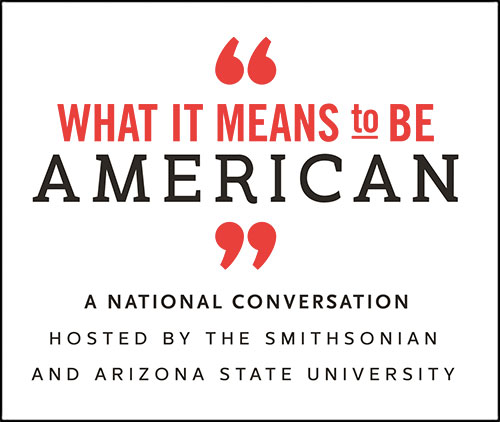 The Constitution tells us what makes a citizen of the United States, legally speaking. But over the decades, American citizenship—and the ingredients that make a good citizen in a modern Republic—has been a subject of debate. Voting and serving in the armed forces are part of the equation to be sure. But for some women, minorities, and others, who haven’t always been allowed to participate in elections or to fight, good citizenship has meant engaging in protest and agitating for the privilege of full participation in civic life. For some Americans, good citizenship lives in grand gestures like marches on Washington. For others, it’s going to work every day, paying taxes, and making life just a little bit better for the neighbor down the block, or the overworked math teacher at the local school. Flag raisers and flag burners alike can lay claim. In preparation for “Do We Still Know How to Be Good Citizens?“, a Smithsonian/Zócalo “What It Means to Be American” event, we asked eight scholars to describe times thoughout history when U.S. citizens did their part—and what that meant.
The Constitution tells us what makes a citizen of the United States, legally speaking. But over the decades, American citizenship—and the ingredients that make a good citizen in a modern Republic—has been a subject of debate. Voting and serving in the armed forces are part of the equation to be sure. But for some women, minorities, and others, who haven’t always been allowed to participate in elections or to fight, good citizenship has meant engaging in protest and agitating for the privilege of full participation in civic life. For some Americans, good citizenship lives in grand gestures like marches on Washington. For others, it’s going to work every day, paying taxes, and making life just a little bit better for the neighbor down the block, or the overworked math teacher at the local school. Flag raisers and flag burners alike can lay claim. In preparation for “Do We Still Know How to Be Good Citizens?“, a Smithsonian/Zócalo “What It Means to Be American” event, we asked eight scholars to describe times thoughout history when U.S. citizens did their part—and what that meant.
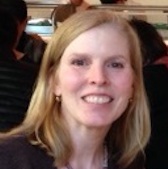
The news these days is filled with images of citizens marching, protesting, and organizing on behalf of one cause or another. Americans, indeed, have organized since the founding of this nation; the visiting Frenchman Alexis d’Toqueville noted their propensity to do so in the 1830s. But in the past, unlike today, Americans relied on associations that spanned the nation to make social, political, and economic change across the nation and in local communities.
The period from the end of the Civil War to the mid-20th century was a particularly robust time of organized civic activism. There wasn’t a town, city, or hamlet that remained untouched by civic organizations. Voluntary associations were founded by people who were black, white, native-born, immigrant, men, and women—from the middle and the lower classes—in a variety of types: fraternals, veteran’s groups, women’s clubs, civic associations, study clubs, ethnic groups, and even secret societies, such as the Masons. In this “nation of joiners,” to borrow a phrase from eminent historian Arthur Schlesinger, Jr., the average person was able to unite with others in local face-to-face meetings as well as state and national conventions.
The work volunteers carried out affected local communities as well as national legislation. Both the National PTA and the Black Panthers, for example, worked to institute school lunches over the course of the 20th century. From America’s founding into the 1960s, clubs, organizations, and associations allowed the average citizen to meet others, make change, and learn important skills such as leadership and organizing.
Times have changed, and now most Americans no longer meet in these broadly-focused face-to-face groups, preferring to gather online, and focusing on single, though important, issues. Perhaps current resistance efforts in the public square can draw on the models of the national voluntary organizations of the past—with local, state, and national offices, modeled on the federal government—to achieve their goals.
Christine Woyshner is a professor of education at Temple University. She researches the history of American education, with a focus on civic voluntary organizations. She has authored or edited six books, including The National PTA, Race, and Civic Engagement, 1897-1970 (The Ohio State University Press, 2009).
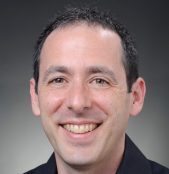
During the Civil War African Americans didn’t just demand citizenship. Against rejection, denial, and insult, they redefined it.
When the Civil War began, free black people had good reason to wonder whether the United States of America was even a good idea: It was the land of the Fugitive Slave Law, which left them vulnerable to enslavement; of the Dred Scott decision, which denied them national citizenship; and of state laws and constitutions, North and South, that excluded them or even threatened them with enslavement. Yet when South Carolina fired on Fort Sumter and Lincoln called for volunteers, black men in cities across the free states assembled to volunteer their service.
They were refused, curtly and sometimes violently. The United States was a white man’s republic, and this was to be a white man’s war.
When the Union finally did come calling at the end of 1862, free black communities debated whether to participate. Some seized the opportunity to prove their worthiness and their patriotism, hoping to claim the citizenship they had long sought. Others urged a more defiant stand. Resist enlistment, they said, until the government promised equal pay, equal treatment, and black officers. But even those who chose to serve soon became dissidents as well, for the government soon broke its promise of equal pay. For more than a year, soldiers and their families protested, refusing to accept unequal wages. Many endured hardship. Some faced courts martial. A few were executed by their own army for their resistance.
These soldiers and protesters established African Americans’ claim to two kinds of citizenship—the citizenship of patriotic service, and the citizenship of principled dissent. With the first, they made it impossible to deny that African Americans participated in the destruction of slavery. With the second, they hitched that commitment to the principle of equality before the law. Constitutional amendments would soon write these ideas into the nation’s organic law. But African Americans were there first.
Stephen Kantrowitz teaches history at the University of Wisconsin-Madison. He is the author of More Than Freedom: Fighting for Black Citizenship in a White Republic, 1829-1889 and Ben Tillman and the Reconstruction of White Supremacy.
Gary Scott Smith
Without a Church, Could a Fledgling U.S. Have Survived? How the Country’s Citizens Made It Possible
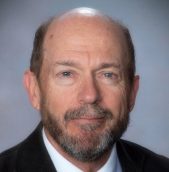
“In the six thousand years since the creation of the world,” founding father James Wilson declared, nothing like the American republic had ever been created. What made this fledging republic so special? According to Thomas Jefferson, the United States was “new under the sun” because it rejected the outdated ideology, allegiances, and patterns of the Old World. Prominent among these arrangements was the long-standing practice of establishing a church and supporting it with government revenues. By not having a national established church, the United States broke with 1450 years of Western tradition, stretching back to the Roman Emperor Constantine.
One reason Western nations had established churches was to ensure that their citizens obeyed the laws and followed traditional moral norms. The critical question then was: Could a republic that had no official, tax-supported church survive? Jefferson called this arrangement the “fair experiment,” and he and other founders insisted that the United States could flourish only if its citizens lived by high moral standards. As George Washington argued in his Farewell Address, religion and morality were “indispensable supports” of “political prosperity.”
Ordinary Americans, therefore, had a vital role to play in their new nation’s success. Although they fell short in many ways, most notably their treatment of Indians and the practice of slavery, their moral practices and commitment to the common good enabled their country to survive British, French, and Spanish challenges to undermine their autonomy. Through their participation in congregations, voluntary organizations, and government at the local level—and by caring for their neighbors—many Americans in the early national period put the needs of others before their own, and worked to help the poor, vulnerable, and sick. Their virtuous conduct, self-sacrifice, and compassion helped the United States become a great nation and serve as model of democracy and civic responsibility for other countries.
Gary Scott Smith chairs the History Department and coordinates the Humanities Core at Grove City College, where he has taught since 1978. He earned his M.Div. at Gordon-Conwell Theological Seminary and his Ph.D. in History at Johns Hopkins University. In 2001 he was named Pennsylvania Professor of the Year by the Carnegie Foundation for the Advancement of Teaching and the Council for Advancement and Support of Education. He is the author or editor of eleven books including, most recently, Religion in the Oval Office: The Religious Lives of American Presidents (Oxford University Press, 2015) and Suffer the Children: What We Can Do to Improve the Lives of the World’s Impoverished Children (Cascade Books, 2017). Smith is also an ordained minister in the Presbyterian Church (USA).

After the Civil War, the issue of women’s suffrage became completely entangled with the campaign for the 15th Amendment. In effect, radical Republicans sold out women’s rights activists in the name of passing a constitutional amendment guaranteeing black male suffrage. As a result, the women’s rights movement suffered a dramatic split between activists such as Elizabeth Cady Stanton, Susan B. Anthony and Sojourner Truth, who refused to support an amendment that did not include suffrage for women; and other activists, such as Lucy Brown, Henry Blackwell, and Frederick Douglass, who were willing to defer the vote for women for the sake of enfranchising black men. Ultimately, both sides in this debate were thwarted: The Republicans did not honor their commitment to women’s suffrage and the 15th Amendment did not protect the franchise for black men.
Teaching this material this semester, I was struck by the story of an 1867 Kansas referendum that would have enfranchised both black men and women, had it passed. Brown, Blackwell, Cady Stanton, and Anthony all campaigned for the Kansas referendum. That took a good deal of courage. They were treated horribly by misogynistic Republicans. In an attempt to taint the suffrage campaign with immorality and illegitimacy, for example, Republican spokesmen charged that Lucy Stone and Henry Ward were practitioners of “free love”; the “grounds” for this false accusation being that Stone had refused to take Blackwell’s name when the couple married. It took even more courage for the suffrage activists to decide how to make the best of an impossible situation—with Brown and Blackwell agreeing to sideline women’s suffrage for the sake of the 15th Amendment, and Cady Stanton and Anthony forming an ill-advised alliance with the likes of southern Democrat and racist, George Train, who viewed white women’s suffrage as a way of outvoting black men.
This episode to me epitomizes the complexity of racial and gender politics, and the way that competition for rights can obstruct the larger goal of equality under the law. It also illustrates the willingness of committed citizens to compromise perfection for the sake of progress, even at the cost of personal friendships and movement solidarity.
Susan E. Gray is Associate Professor of History and Co-Director of the Public History Program at Arizona State University. Recent publications include a co-edited volume, Contingent Maps: Re-thinking the North American West and Western Women’s History (2014), and a 2015 essay in The Public Historian, “Indigenous Space and the Landscape of Settlement: A Historian as Expert Witness.” Gray is now completing Lines of Descent: Family Stories from the North Country, a multi-generational biography of a mixed-race family, for the University of North Carolina Press. She has held major fellowships from the NEH, the Fulbright Foundation, and the Charles Warren Center at Harvard University. From 2003-2012, Gray served as co-editor of Frontiers: A Journal of Women Stories.
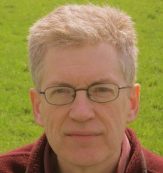
It started with ferocious footage on TV: film of Alabama state troopers wading into a long line of marchers on the Edmund Pettus Bridge in Selma, Alabama, knocking people down and pummeling them as they scrambled to their feet, tear gas wafting over a panicked retreat.
People had seen worse during the Freedom Rides in 1961, in Birmingham in 1963, in the Mississippi delta in the blood-soaked summer of 1964. But there was something particularly appalling about this assault on the civil rights movement, in the spring of 1965. Maybe it was just one brutalization too many. Maybe it was the purity of the marchers’ purpose. Why were people being beaten when all they wanted was to secure their right to vote?
Outrage fed action. The next morning, Monday, March 8, there were pickets outside the Justice Department, demanding that the federal government intervene on the protesters’ behalf. In Detroit, supporters announced a sympathy march that would draw 10,000 people. From Atlanta, Martin Luther King called on the nation’s clergy to join him in Selma. By Tuesday, 450 had arrived. That night one of the newcomers, a Unitarian minister from Boston, was beaten to death by white thugs.
News of his murder pushed protests to a fever pitch. Over the next few days 1,500 people rallied in New Haven, 2,500 in Poughkeepsie, 3,500 in Louisville, 15,000 in Harlem, another 15,000 in Washington’s Lafayette Park, and 25,000 on the Boston Common. Down in Selma the clerics kept coming. “There is a time,” a rabbi told a reporter, “when man must choose between man’s law and God’s law.”
Or fuse them together. Lyndon Johnson hadn’t wanted to make voting rights a priority. But the pressure was too intense to resist. On Monday evening, March 15, the president went before a joint session of Congress to introduce legislation guaranteeing African Americans’ access to the ballot.
He did something else too. “It is not just Negroes, but really it’s all of us who must overcome the crippling legacy of bigotry and injustice,” he said, in his speech’s final stretch. “And we shall overcome.” They were just song lyrics. But when LBJ repeated them he made himself one with the movement, just as thousands of ordinary people had done in the eight days since 600 Americans had crested the Edmund Pettus Bridge, to demand that the nation protect its most fundamental right and the democracy upon which it rested.
Kevin Boyle teaches modern American history at Northwestern University. His book, Change Is Gonna Come: America in the 1960s, is to be published by W.W. Norton next year.

Until 1865, the United States had an enslaved population of about four million people, and the world’s wealthiest and most powerful slaveholder class. The Civil War brought this economic and social order—and system of racial control—tumbling down. The 14th and 15th amendments made freed people enfranchised citizens, in theory. But what did citizenship for former enslaved people really mean?
The northern white abolitionists of the American Missionary Association, or AMA, attempted to answer this question—and put promises into practice—by founding universities for black people, and by working to make them beacons of racial egalitarianism. Unlike many black schools, AMA colleges taught a classical curriculum that was intended to foster leadership and citizenship for former slaves. Some of the most prominent future leaders from the black community came from AMA institutions like Atlanta University and Fisk University in Nashville.
Atlanta University, founded in 1869, provided a refuge from the prevalent racism and white supremacy that enveloped the South. To some extent, the AMA educators there were creatures of their time. Although white women played a leading role, white men controlled the school. Black people did not begin teaching at Atlanta University until the 1890s, and white women ran the school until the 1920s. Nonetheless, AMA schoolmen also practiced, for the day, an unusual concept of racial equality. They encouraged students to shed the heritage of slavery, teaching racial equality. Classes were integrated—something strictly prohibited in Southern schools—with the children of white teachers present in classes and the dining room.
The educators’ quiet efforts made an impression on their students—a new generation of American citizens. Edmund Ware, a Yale graduate and abolitionist, served as the black college’s president for much of its early history. Soon after he arrived on campus in the late 1860s, one student took note of the courtesy with which Ware treated him. “It was a new and strange thing to us to see a white man carrying wood and making fires for us, who had been taught, by precept and example, that it was our business to do the like for his kind.” “However you may be mistreated in the city or elsewhere,” Ware was said to have informed students, “I want you to know that the moment you set foot on these grounds you are free men in a free country.”
The AMA’s impact on the struggle for African American citizenship is often underestimated, yet it was lasting. “This was the gift of New England to the freed Negro,” W. E. B. Du Bois, who attended Fisk University and taught at Atlanta University, wrote in The Souls of Black Folk (1903). “Not alms, but a friend; not cash, but character.” The AMA’s educational efforts were the “finest thing in American history, and one of the few things untainted by sordid greed and cheap vainglory.”
William A. Link is Richard J. Milbauer Professor of History at the University of Florida. He is a historian of the South whose work includes The Paradox of Southern Progressivism, 1880-1930 (1992), Roots of Secession: Slavery and Politics in Antebellum Virginia (2003), Atlanta, Cradle of the New South: Race and Remembering in the Civil War’s Aftermath (2013), and Southern Crucible: The Making of an American Region (2015). He is currently writing a study of the life and times of Frank Porter Graham.

At the dawn of the 1950s, as the United States tried to come to terms with its new role of superpower in a Cold War world, American adults worried about the younger generation. Were those who had not borne the weight of the Great Depression, and of war, sufficiently strong and resolute? Were they capable of acting as democratic citizens in a dangerous world?
Their worries inspired a lot of pessimistic debate. The new Department of Defense—with a sense that much was at stake—joined forces with a maker of instructional films, and in 1951 the movie Citizenship and Service joined What to Do on a Date in the darkened high school classrooms of postwar America. Citizenship and Service offered the following definition of citizenship: it is “the earning of rights by fulfilling responsibilities,” with military service the “heaviest” obligation of all. In war after war, young American men had taken on that obligation. Whether voluntarily or through the force of conscription, they had fought, killed, and died as citizen soldiers.
World War II was, in many ways, the fullest expression of that logic of citizenship. Millions of ordinary citizens—including those who served in the “citizen’s” military—endured hardships that ranged from disruption and upheaval to some of the most horrible combat in human history. The conflict—a total war—became the model of citizenship fulfilled, a time widely accepted as THE moment “when all Americans did their part.” But there are problems, of course, with that model of citizens’ service. What of women, who bore no military obligation? Were they lesser citizens? And war: was it the ultimate expression of the nation? In a nation whose wars are now fought by a professional all-volunteer force, does citizenship still entail rights earned through obligations?
Beth Bailey is Foundation Distinguished Professor of History and Director of the Center for Military, War, and Society Studies at the University of Kansas. Her publications include America’s Army: Making the All-Volunteer Force.
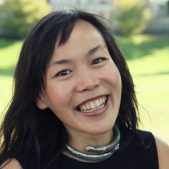
American citizens have done their part when they let youth lead the way—even when the public dismisses their demands as “unrealistic.”
On February 3, 1964, approximately 464,000 Black and Latinx (mainly Puerto Rican) students boycotted school and protested racial segregation and poor, overcrowded conditions in their schools. This was not in the Jim Crow South. It was in New York City. Led by Bayard Rustin and Milton Galamison, roughly half of all NYC students that day participated in the boycott. They marched out of roughly 300 of the city’s 860 public schools, and rallied at the Board of Education building in Brooklyn.
They demanded not just racial integration, but also textbooks that reflected African American and immigrant experiences, resources for a meaningful education, greater diversity among teachers, and reforms in pedagogical training. The school boycott focused on de facto segregation. The government ignored historical housing patterns to guarantee continued racial segregation. It didn’t need overtly racist laws or police chiefs, like “Bull” Connor in Birmingham, the boycotters said. Although the Central Board of Education failed to address the protestors’ demands for integration, the boycott helped to lay the foundation for a new movement—demanding community control for the schools they attended.
The struggles continue to this day; in 2009, New York reported the country’s highest concentration of Black and Latinx students in intensely-segregated public schools (with less than 10 percent white enrollment). Today, youth here continue to lead education organizing efforts, fighting the over-policing of schools and demanding a meaningful college preparatory education. Student groups now frequently mention the 2006 “Penguin Revolution” in Chile—when thousands of high schoolers pushed for education reform—and the plights of students in South Africa, and even Palestine. Like their predecessors in the 1960s, these young Americans want to shift the debate from being about themselves—whether they are good students, whether they are low-income, whether they “work hard enough”—to being about their schooling, and their place as citizens of the United States.
Celina Su is Marilyn J. Gittell Chair in Urban Studies and an Associate Professor of Political Science at the City University of New York. Her publications include Streetwise for Book Smarts: Grassroots Organizing and Education Reform in the Bronx (Cornell University Press) and Our Schools Suck: Young People Talk Back to a Segregated Nation on the Failures of Urban Education (co-authored, NYU Press). She has served on New York City’s participatory budgeting Steering Committee since its inception in 2011, and she currently leads the URBAN Research Network, a coalition of more than 1,800 scholars, activists, and artists committed to community-engaged research, social change, and democratizing knowledge production. Her honors include the Berlin Prize and the Whiting Award for Excellence in Teaching.



